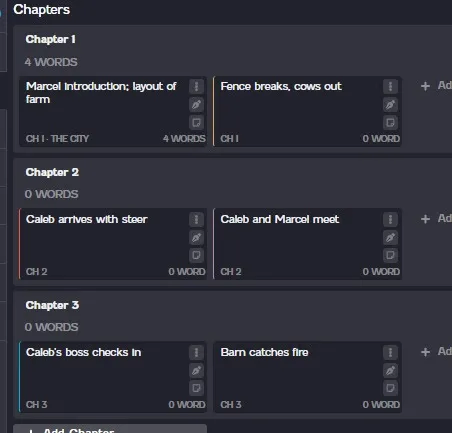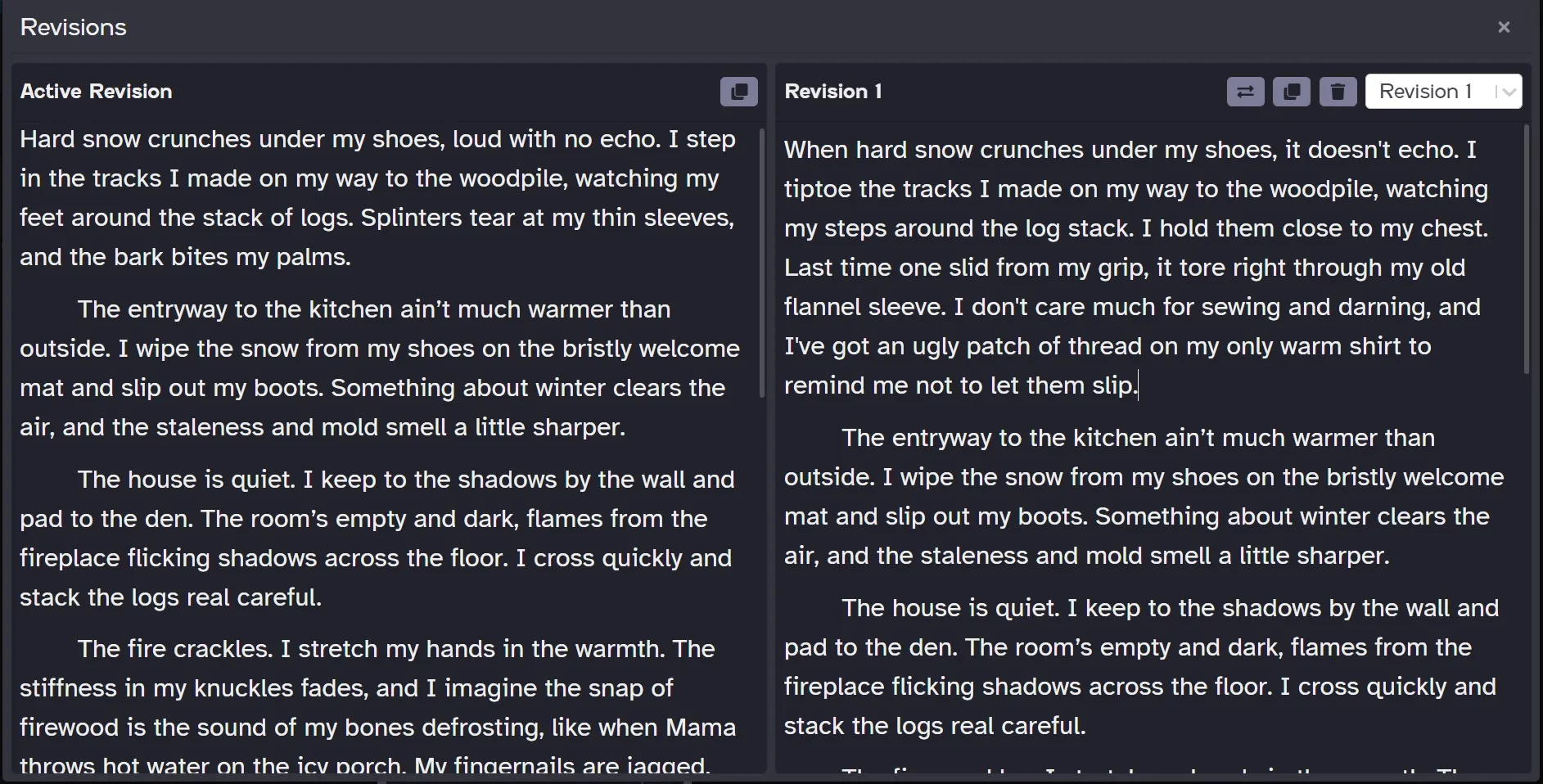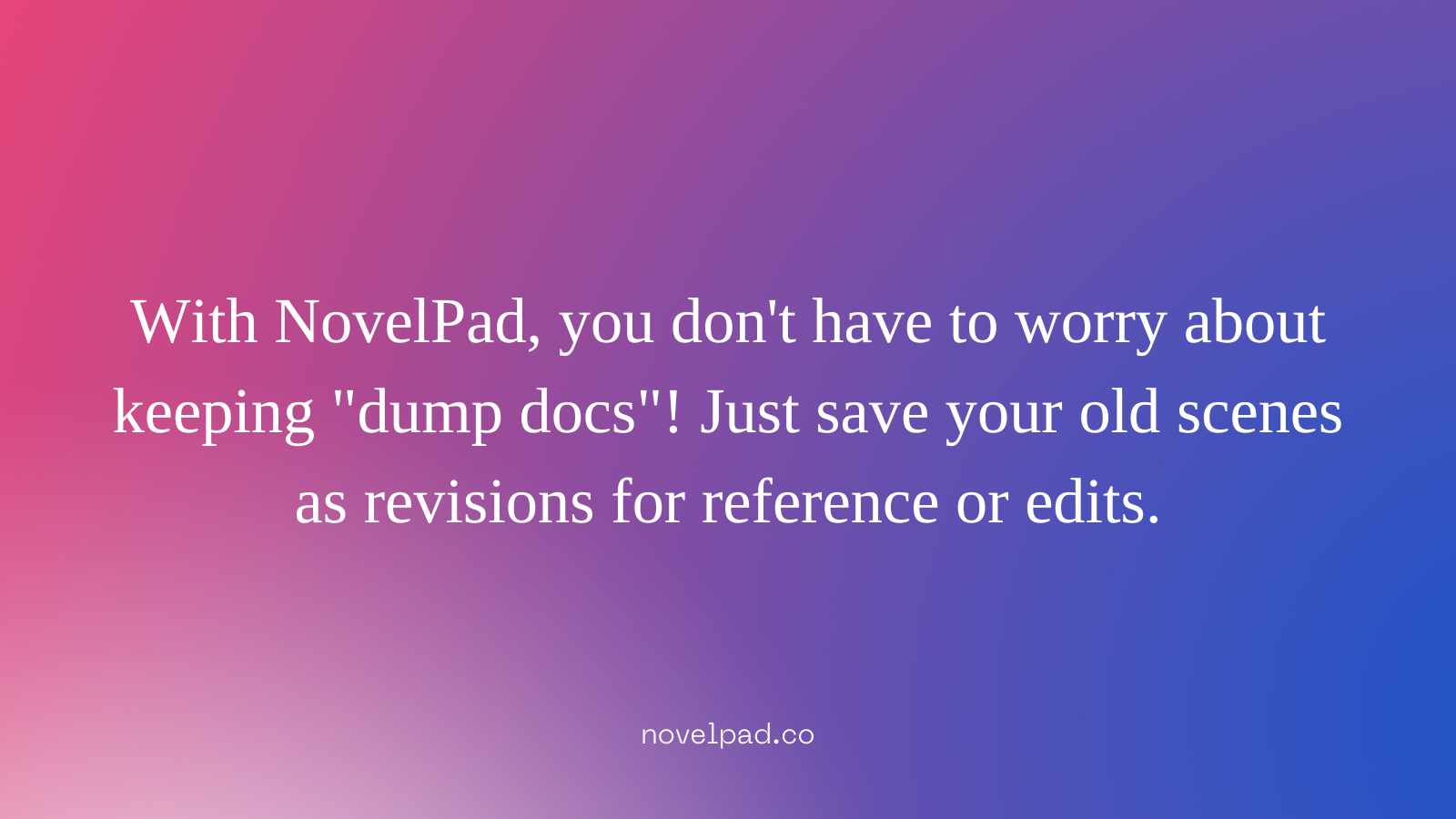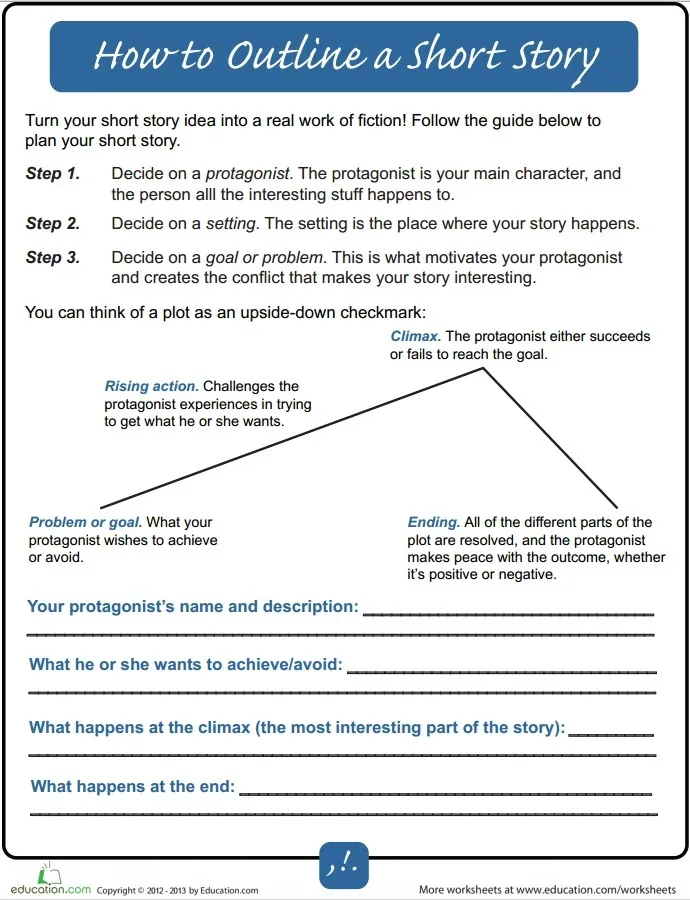How to Write a Short Story with an Outline [TEMPLATE EXAMPLES]
Benji Russell
NovelPad Author
Because short stories take less time to write, they’re ideal for targeting and honing specific skills. Even if you don’t intend to publish short stories, these skills can translate into writing longer pieces, like novels. The smaller space is also ideal for learning how to use an outline to craft stories.
Let’s talk about what short stories are, what they’re made of, how to write one, and how to use an outline in a way that makes the drafting process as efficient as possible.
What is a short story?
When a work of fiction is 50,000 words or more, we can consider it a novel. Novellas are shorter than that, $ ranging between 10,000 and 40,000 words$ .
Short stories are shorter than novellas, maxing around 10,000 words.
Because short stories are shorter than novels or novellas, they obviously have less content, fewer characters, and a smaller space in which to tell the story.
This doesn’t mean short stories are inherently less complex than novels, though. Short story authors are tasked with packing a satisfying read in a small space, which means they need to create a big emotional response in a short amount of time. Their plotting, pacing, character development, and prose need to be a ten out of ten, which is why short stories are such great practice for fiction writers.
What are the components of a short story?
Like novels, short stories should include a narrative arc. This means they need characters, themes, plot points, and so on. At the bare minimum, a short story should include the following:
Character
The story has to happen to someone—stories require characters.
A short story won’t have room for a full cast of characters a la A Song of Ice and Fire, but this doesn’t mean characters can’t be interesting. Because there’s limited space, focusing on one or two vital characters gives writers the chance to explore and develop them.
Have you ever browned meat in a pan? If you crowd the pan, the meat won’t brown properly—you have to work in batches so each piece has enough space to cook. It’s a similar concept with short story characters. Too many in too little space, and no one gets cooked.
Setting
Stories also have to happen somewhere. The place where the story happens is called the setting.
In the same way that short stories work with fewer characters, they often work with smaller settings. A writer can do more with a smaller physical space than they can with a huge one. A specific room or house might be easier to connect with than a story taking place over a large span of city.
Ideally, the setting should be relevant to the characters and plot. It should supply the characters with things to do, and it should help steer the conflict. For example, in The Yellow Wallpaper by Charlotte Perkins Gilman, the setting is integral to the main character’s descent into madness. If she weren’t trapped in that room with that wallpaper, we would have a much different story, if we had a story at all.
Plot
Things have to happen in any story, no matter how short or long. The things that happen in a story are the plot.
A plot should include a beginning (where we meet the characters and learn their wants and needs), a middle (where most of the plot happens, including the climax), and an end (where we see where the characters ended up).
To make it even simpler: a plot involves a character undergoing change.
The rules change a bit for flash fiction. In a piece of microfiction ten words long, the author can’t exactly run through a plot diagram. Here, the objective is different. The writer aims to describe a specific image, emotion, place, or moment, and the focus is more on imagery and specific word choice.
Theme
The theme in a work of fiction is the core idea or message. Characters explore themes as they move through the plot.
In Shrek, the plot revolves around Shrek’s journey to drive the fairytale creatures out of his swamp, which involves rescuing Princess Fiona and bringing her to Lord Farquaad. Throughout this journey, Shrek and Fiona both have to reconcile their monstrous appearance with their need for love and self-acceptance.
The plot of Shrek is everything Shrek and company do throughout the movie. The themes of Shrek are the messages the story conveys, like self-acceptance.
Short story writing prompts
Now that you know what a short story is and what it involves, it’s time to write one. You may already have an idea, but if you don’t, try using a short story writing prompt! Google "short story writing prompts" for approximately a trillion options, or try one of these:
1. In the middle of a road trip, a family realizes they left the youngest kid at a gas station. It’s been an hour.
2. A snowstorm forces our main character to crash with their deadbeat father. Do they reconcile their differences, or do they finally have it out?
3. A ghost haunts an old castle, which has become a popular tourist destination. Write about the lessons the ghost learns from these visitors.
4. A park ranger investigates reports of a monster terrorizing campers at night. For an added challenge, write from the perspective of the monster.
5. Every night, our main character hears strange noises from the neighboring apartment. One day, they decide to investigate. What do they find?
How to write a short story step-by-step
Got your idea? Awesome! It’s time to write a short story. Let’s go through the process step by step.
Brainstorm
First, you need something to write about. Once you’ve identified the core image or concept of your story, explore it further to figure out what the story’s going to be about. If you already know what your story is going to be about and what you want to happen, you might skip this stage.
Here are a few brainstorming methods to try.
Freewriting: On a blank piece of paper or word document, start writing anything and everything that has to do with your story. Keep going until you have enough to move on to the outlining stage.
Mind map: In the middle of a blank page, draw a circle with your core idea (maybe it’s ‘sad birthday party’ or ‘twist ending where the love interest dies’). Make a line out from this idea and write something associated with it, and keep going until you have enough for a story.

Your mind map might look something like this.
People watching: Head to your local park or café and keep an ear open on your fellow humans. Jot down interesting things they say, describe their outfits, imagine their backstory—use these observations to write a character!
Outline
In an outline, you’re laying out the plot of your story. If you’re writing flash fiction or microfiction, you might fuse the brainstorming and outlining stages together by writing what you want to describe.
Write down everything that happens in your short story. It’s okay if there are gaps—the whole point of an outline is identifying and filling in those gaps. The outline can be as sparse or as detailed as you want. This is a tool meant to prevent you from getting stuck while drafting.
Popular outlining methods include:
Scene cards: Write each scene on a card and lay them on a flat surface. If you have a writing software like $ NovelPad$ , use the Chapters page to map out your scenes. This lets you literally see gaps in a story and move scenes around as needed.

NovelPad’s Chapter overview page.
Bullet point method: Write each story beat as its own bullet point. This is a great method because it’s easy to customize. If you’re a heavy planner, you can go as in-depth as you’d like. If you like to figure out the details as you go, four or five bullet points should be plenty!
Plot diagrams: Whip out a Freytag’s Pyramid diagram or whichever structure suits your fancy, then fill it in with your story beats.
Draft your short story
With your outline as a reference, draft your short story. Try to write it quickly so you don’t lose momentum. If you get stuck while you’re drafting, refer to your outline, and if your outline doesn’t help, tweak it.
Here are a few tips to help you draft efficiently.
Skip or summarize difficult scenes. Dropping everything to worry over a tricky scene might kill your momentum, which ups your chances of walking away from the short story entirely. Instead of staying stuck on a tricky scene, write what you want to happen and move on. You can always come back later to revise.
Cut deleted content and paste it into a separate word doc. This means you never totally lose that deleted content, which will help when it comes to killing your darlings and deleting precious sentences that need to go. Plus, having them somewhere else means you can use them later, either in the same story or in another project!
With NovelPad, you don't have to worry about keeping "dump docs"! Just save your old scenes as revisions for reference or edits.

Users can also remove scenes from their Chapters board, then insert them again later.

Make notes for future revisions along the way. Some writers like to revise the previous day’s work before continuing to draft, and if that works for you, godspeed. But if you tend to fiddle with revisions at the expense of finishing your draft, try making a note of the change you want to make and moving on.
Revise your short story
After you’ve finished your first draft, set it aside for a time. Some writers might need a day to let it breathe, while others might take a few weeks apart from the piece. The break from the page will make it easier to spot mistakes.
Your first pass at revisions should be all about plot. How’s the pacing? Are there any plot holes or steep contrivances? Do a second draft correcting these errors.
Next, take a look at more detailed things like sentence structure, flow, and word use. Check for repeated phrases, clichéd or weak imagery, and small inconsistencies (maybe our main character was wearing yellow shoes on page one, but they’re green on page five).
When your plot and prose are ironed out, you’re ready to go through and check for typos.
You can also enlist the help of beta readers. Beta readers are people who volunteer to read your story and answer questions about it to help steer your edits.
Short story templates
If you’re having trouble plotting your short story, try one of these outline templates!
1. How to Outline a Short Story ($ source$ )

2. Freytag’s Pyramid ($ source$ )

3. Three-Act Structure ($ source$ )

You’re ready to write!
Armed with a template, an outline, and tips and tricks for drafting and revising, you’re ready to write a short story. From here, all you have to worry about is practice. Writing is a skill like any other, and practicing these outlining and drafting skills will have you writing top-tier short stories in no time.
Like what you're reading?
Join other authors like you in NovelPad’s free writing community!
Join the communitySimilar Posts
What File Formats are Accepted by Kindle Direct Publishing?
File types for ebooks, paperbacks, and hardbacks on Amazon's KDP.
Ollie Ander
Is probably just a couple cats in a trench-coat—the hair shedding and sunlight napping are highly suspect.
The Writer’s Resolution Guide 2024
Goal ideas and strategies for your new writing year.
Sage Kay
Writer, reader, outfit repeater.
How long is a fantasy book? Words, pages, chapters, scenes, & prologues
What should wordcount goals look like for a fantasy novel?
S.R. Beaston
Crafty with words, wit, and wisdom, just add caffeine to make it more interesting.
When is the best time to publish a horror novel? [Peak Sales Method]
Make the most of your horror book launch by strategizing with these tips.
Bella Rose Emmorey
book editor, rogue behaviorist, digital marketer, writer, brand builder, plant aunt, and cheese enthusiast.
Best Book Formatting Tools
5 great formatting tools for self-published authors.
S.R. Beaston
Crafty with words, wit, and wisdom, just add caffeine to make it more interesting.
How long is a Science Fiction Book?
How many words, chapters, and pages should be in your sci-fi novel?
Ollie Ander
Is probably just a couple cats in a trench-coat—the hair shedding and sunlight napping are highly suspect.